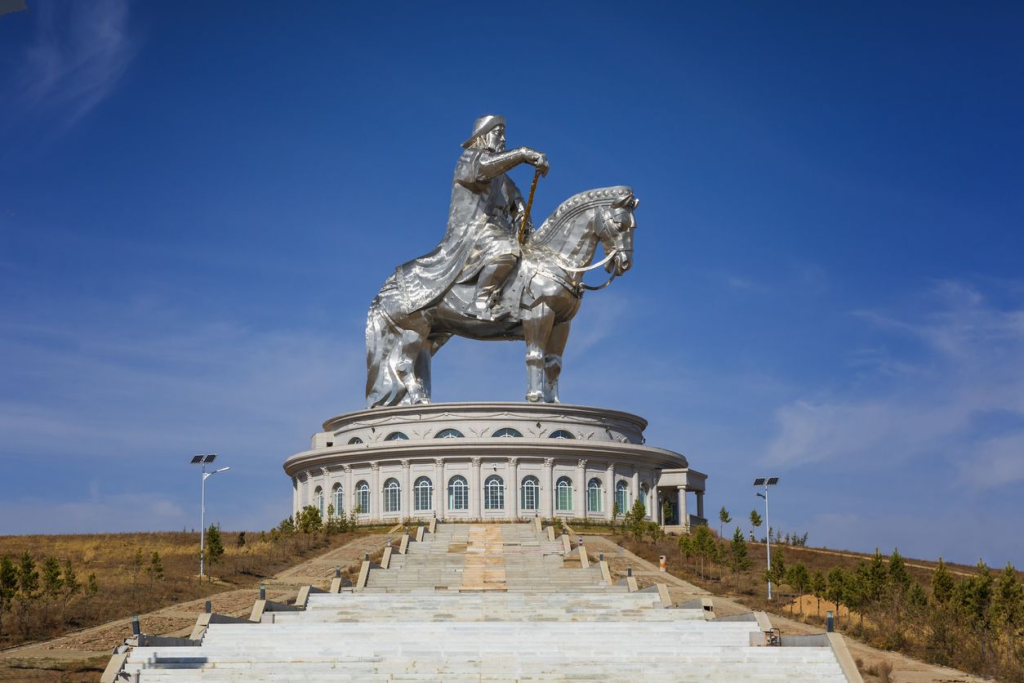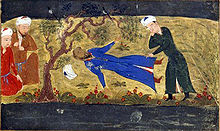Introduction.
The conquest by the Mongols between 1219 and 1220 of the Islamic Empire of Kharizm (or Khuarezm), in Turkestan, will serve as a model to present its operational and tactical characteristics. The rapid defeat of the Muslims at the hands of Genghis Khan and his men is an example of the synergistic use of the operational movement capability and combat capability of a highly efficient military system.
Frictions between neighbors.
The Kharizm empire was very recent. While Genghis Khan conquered Central Asia, up to his borders, Shah Mohamed II extended his domain to the south and east. He had inherited the territory of modern Iran (Persia), but had also added Afghanistan, almost to the Indus River, and had reached the Sir Darya, occupying all of Transoxiana.

The entire confrontation between the two empires began when Inalchik, the governor of the city of Otrar, on the Sir Daria river, about 200 km from the Aral Sea, stopped a caravan of merchants sponsored by the Great Khan and executed their chiefs, accusing them of spies. And possibly he was right, but that was very undiplomatic and damaged a very sensitive issue in the usual customs between states and hierarchs. Genghis Khan sent an embassy to the Shah, made up of a Kharizmi and 2 Mongols, requesting a punishment for Inalchik. Muhammad executed the Kharizmi and returned the 2 Mongols to Genghis, their heads completely shaved, a serious personal insult to those warriors. War was already inevitable.
Force preparations.
Genghis Khan prepared his army for a march of more than 1,500 km, from his Tien San mountains to the borders of Transoxiana.

The Mongolian army at the time numbered just over 100,000 men. His basic tactical-operational unit was the tuman or division, with about 10,000 men, divided into 10 mingans or regiments. The great army was divided into three parts: the army on the left or the east, the one on the right or the west, and the one in the center. The first two had a highly variable number of men, depending on operational and tactical needs; for example, one could have double the number of men than another. The army in the center was much smaller, made up of elite units and the guards of the Khan and the various Mongol princes; in them their basic unit was the mingan. A Mongol army corps consisted of one or two tumans.

Mohamed II assembled a large, well-armed and equipped army, totaling between 200 and 300,000 men (some authors speak of up to 400,000 men, clearly exaggerating), to defend his empire from the expected Mongol invasion from the east. Many of his men were also horsemen from the Turkestan steppes, who were equipped and fought in a similar way to the Mongols. The Shah was sure that his soldiers could stop and repel the invader.
To this end he deployed most of the troops along the Sir Darya, his great natural barrier to the east, and established a fortified line of communications from his army’s deployment to his capital at Samarkand. Lastly, to the north of the empire and protecting it, between the Aral Sea and the Sir Darya stretched the formidable natural obstacle of the Kizil Kum desert, in the Turanian depression, hard and dry where they exist.
Thus, reassured with a good plan, he defensively hoped that he could defeat the Mongols in a major battle, by sheer numerical strength of his army. But, it was von Moltke, the old man, head of the German HHQQ. in the late 19th century, who said that «plans used to last until first contact with the enemy.»
Development of operations.
During the spring and summer of 1219 a Mongol army corps under Jochi, the eldest of Genghis’s sons, ravaged the land west of the great Lake Balkhash, near Otrar, leaving a landscape so devastated that it it was incapable of supporting an army without its own supplies.

According to the campaign plan drawn up by the orlok or lieutenant of the Khan, Subidai Bahadur, a Mongol army corps headed in the early 1220s towards the valley of the Fergana River, south of the Sir Darya, on the exposed flank of the Turkmen deployment, to carry out a force reconnaissance. It was commanded by Jebe Noyan, one of the Khan’s best orloks.
Part of the Turkish forces, under the command of Mohamed and Prince Jalal-ad-Din, advanced slowly to the east, over the valley. When the vanguards met, Mohamed vastly outnumbered the Mongols and ordered to form up for combat. Caught in narrow terrain, which did not favor his cavalry force, Jebe decided to attack anyway. The Mongols charged the Turks ferociously, inflicting heavy casualties on them. They counterattacked, trying to involve them up and almost succeeded. But the Mongols managed to break contact and escaped to the east.
Most decisive operations for success.
In February 1220, the 3 Mongol armies, under the command of Genghis, Jochi and Ogedei and Chagatai, two of his other sons, crossed the area previously devastated by Jochi and unexpectedly converged on Otrar, on the left flank of the defensive line of Sir Daria. After the assault on the city, the Mongols captured the governor Inalchik and executed him very cruelly.
The two armies commanded by Jochi and the other 2 brothers then headed south, following the Sir Daria, and began to harass during their march the fortified positions of the Turks along their planned great defensive line. Simultaneously, the army corps of the orlok Jebe Noyan, turned north, took the city of Kokand, in the upper Sir Daria, and headed to meet the 2 Mongol armies.
All these offensive operations helped to fix Mohamed’s attention on his fortified defensive line of Sir Daria. In the south, he had won the battle and repelled the invader, and in the north, although the Mongols had taken Otrar, they had not penetrated Transoxiana. The Turkish army maintained its boast of invincibility. Mohamed brought all of his operational reserves closer to Sir Daria. However, although in both cases the Mongols had suffered heavy casualties, their ratio to them was of great concern to the Turks.
For its part, after the capture of Otrar, the army under the command of Genghis Khan, with Subidai as his chief of staff, and made up of 4 tumans, headed north. There he took the Turkmen city of Zarnuk, with the sole purpose of capturing a man who, according to his informants, knew of a practicable path through the Kizyl Kum, following a chain of oases.
Then the Mongols delivered their decisive blow.
(TO BE CONTINUED)